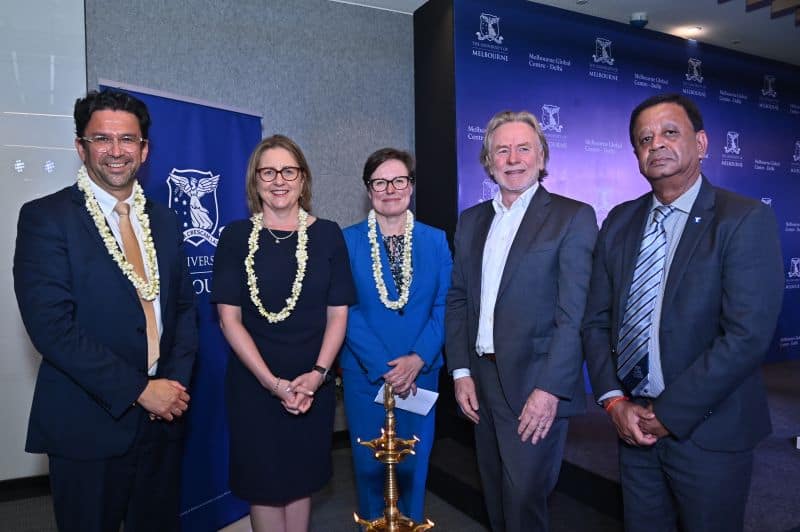Canada, Australia and then Canada again!
Canada last week announced a further capping on the number of international students that can enter the country to study in its various world-class institutions. It’s a move that is expected to hurt international students aspiring to study in the North American country – mainly Indians, who currently account for about 40% of all students studying in Canada.
Earlier in the year, Canada implemented an initial cap, with immigration minister Marc Miller supporting a cap on new study permits.
Last month, Australia followed Canada’s lead by proposing a cap on international student enrolments in 2025. This plan, introduced by Australia’s education minister Jason Clare and expected to pass in parliament, will result in the lowest intake of international students in recent years – a significant reduction of more than 50% compared to 2023, when 560,000 international students began their studies in Australia.
Both countries have also introduced additional measures alongside these caps, including increases in visa fees, stricter compliance requirements for universities, and more rigorous visa application processes.
And these developments raise critical questions: Why have countries that have historically welcomed international students suddenly decided to limit their numbers? And, perhaps more importantly, could we have predicted this shift? The answer may be yes.
To understand the situation, let’s revisit 2005. That year, approximately 138,388 Indian students left to study abroad. The US dominated the market, attracting around 55% of these students, with other popular and emerging destinations sharing the remaining 45%.
Australia, then an increasingly popular choice, drew 17% of Indian students, while 14% went to the UK. Canada and New Zealand, both emerging as foreign education destinations, received 5% and 2% of Indian students respectively.
| Destination country | Percentage of students | Actual number |
| US | 55 | 76,503 |
| Australia | 17 | 23,849 |
| UK | 14 | 19,228 |
| Canada | 5 | 7,456 |
| China | 4 | 5,634 |
| Germany | 3 | 3.583 |
| New Zealand | 2 | 2,135 |
In terms of higher education infrastructure, English-speaking developed countries have substantial capacities. The US alone has around 4,000 universities and colleges that host international students from across the globe. Canada, the second-largest destination, has over 220 public colleges and institutes, followed by the UK with 160 universities. In terms of universities, Australia leads among the smaller countries with 42, followed by Ireland with 22, and New Zealand with eight.
Collectively, these top study destinations host nearly 4,500 higher-education institutions, which have traditionally had a strong capacity to absorb international students. These institutions depend on international students to varying degrees, primarily for the diversity, skills, research contributions, and revenue they bring.
It’s no surprise that the number of Indian students studying abroad has steadily increased. This year, approximately 1.33 million Indian students are pursuing their education overseas – a tenfold increase in less than 20 years.
China, the largest study-abroad market globally, tells a similar story. In 2010, 285,000 Chinese students left their country to study abroad. By the end of 2023, this number had surged to just over a million (1,021,303), reflecting an extraordinary growth trajectory.
Like China and India, other smaller markets, such as Nigeria, Pakistan, Bangladesh and Malaysia, have also seen significant growth in the number of students studying abroad.
However, there’s a growing demand-supply imbalance. While the number of students seeking international education has skyrocketed, the expansion of universities in developed countries or their capacity to accept international students has not kept pace.
Although new study destinations have emerged over the past 20 years, their market share remains significantly smaller than that of traditionally popular ones. This means that while demand for seats has increased exponentially, the number of available seats has not – and likely never will – catch up.
Governments now understand that the sheer number of international students is no longer an issue. Consequently, there’s less need to attract international students with appealing policies.
Looking back to 2010, around 600,000 students from Asia and Africa travelled abroad for higher education. The US captured over 50% of these students, igniting fierce competition among countries like the UK, Australia, Canada and New Zealand. Governments in these countries offered attractive study and immigration opportunities to lure international students, putting the students in a strong bargaining position.
Fast forward to 2024, and while the number of universities and available seats has grown only marginally since 2010, the demand for these seats has quadrupled. This shift in dynamics has placed study destinations and their governments in the driver’s seat, prompting a clear shift from quantity to quality.
Unlike 15 years ago, these governments now understand that the sheer number of international students is no longer an issue. Consequently, there’s less need to attract international students with appealing policies.
This change provides governments with an opportunity to control not just the number of students entering their countries each year, but also the quality and skills these students bring. Fewer students also translates to better-controlled net migration statistics, which can be favourable to local populations.
Will this situation reverse? There are two possible scenarios: either a decrease in the number of students studying abroad or the emergence of new study destinations. However, neither of these outcomes seems likely to happen anytime soon.
While the growth in Chinese students studying abroad has somewhat slowed since the pandemic, the number of Indian students continues to rise. The Indian government has vowed to address the factors that drive students to study abroad, with the aim of reversing these numbers. Whether this will happen remains to be seen. Only time will tell.
#Canada #Australia #shift #quantity #quality #rightly










